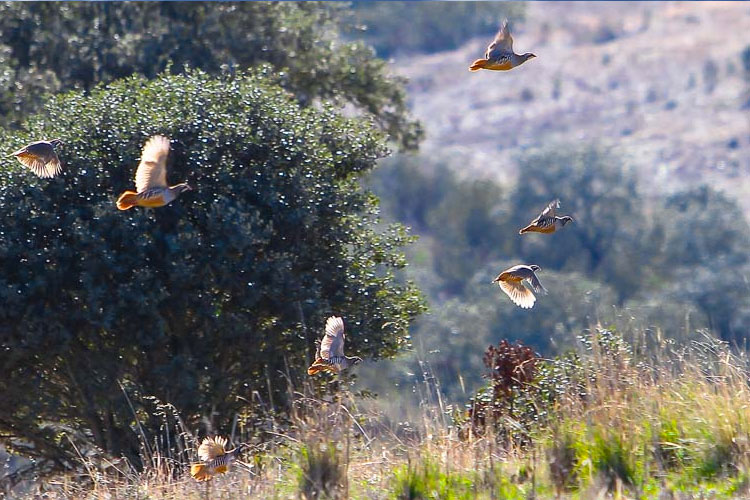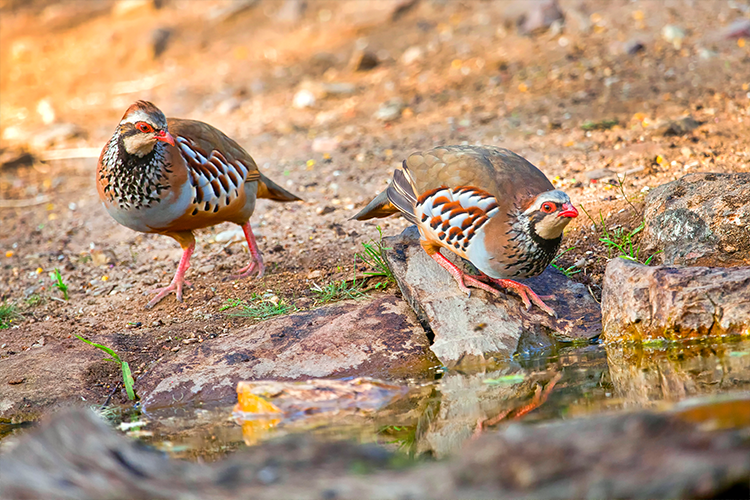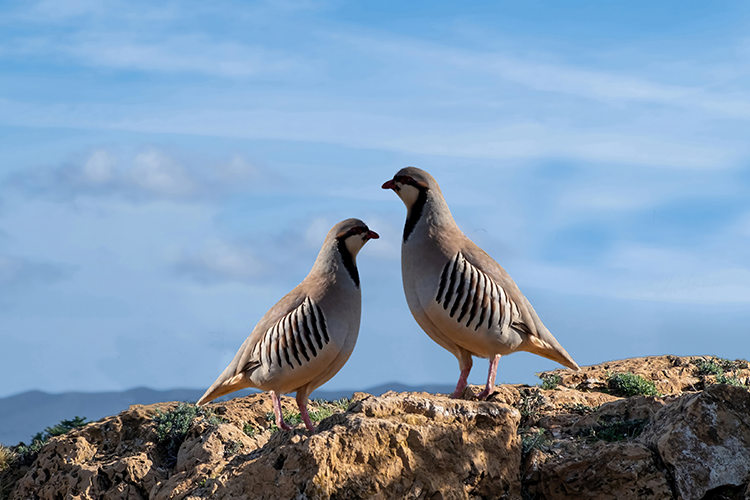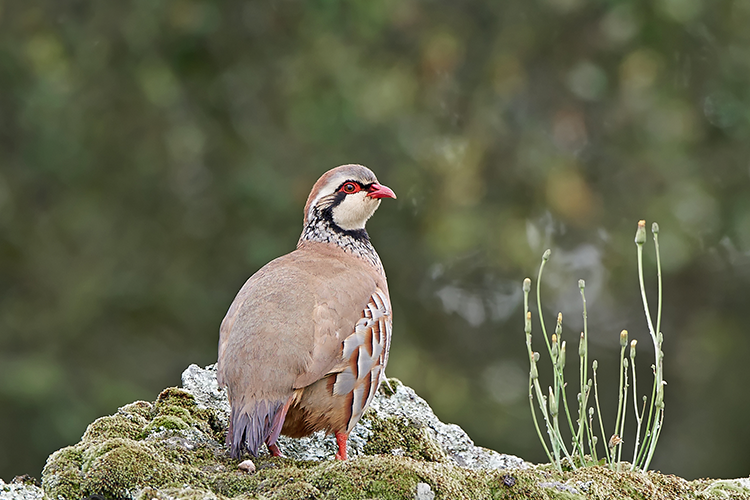Latin Name: Alectoris Rufa
Average fly speed: 30-35mph
Wingspan: 47-50cm
Where to shoot: France, Spain, Portugal
Red-Legged Partridge Shooting Season
For Great Britain, Partridge shooting season runs from 1st September – 1st February. For Northern Ireland, it’s 1st September – 31st February.
Red Legged Partridge Description
Partridge shooting is one of the most exciting and exhilarating of game bird pursuits. With its deceiving wing beat, speed and exceptional skill in hugging the landscape the Partridge is a very challenging quarry to shoot, which makes it all the more desirable.
This species of partridge is sandy grey brown with black and brown barring down its wings. Another key feature of this bird is its “black necklace” which refers to the dark band around its neck. The plump gamebird the red legged partridge also prefers to run rather than fly as its main food source is found on ground level.
The Red-legged Partridge is not native to Britain, but stock from France was successfully introduced to East Anglia in about 1770. Although becoming well established by the end of the century, its spread across Great Britain was slow and its current distribution was not reached until the 1930s.
Despite its introduced status, the conservation of the Red-legged Partridge in Britain is important because the natural range of the species is restricted almost entirely to three of the European countries, France, Spain and Portugal, where numbers are declining.
Due to its Mediterranean origin, the red-legged Partridge thrives on dry areas of sandy soils and breeds most successfully in the highest of summer temperatures. These birds are often commonly on farmland due to having a diet based around leaves and small invertebrates. It has been less susceptible than its smaller relative the grey Partridge to the reduction of cereal insects since the 1950s because its chicks consume considerably more seeds and vegetation even imminently post-hatch.
Red-Legged Partridge In the wild
In the wild, the hen bird commonly lays two clutches in which she will incubate one herself and allow the other for the cock. Therefore, this will allow for the potential to produce two broods simultaneously.
The Red-legged Partridge is very attractive for sporting estates to rear and release due to the red-legged Partridges ability to lay more in captivity. Since starting in 1963, this practice increased very quickly as it was seen as a means of maintaining a partridge shoot despite the decline of the Grey.
The numbers of released pure red-legged Partridges are estimated at about 6 million birds a year and the British population size is estimated to lie between 90,000 and 250,000 pairs.
Contact us
If Partridge shooting sounds like your type of shooting holiday, head over to our Partridge page to see our full catalogue of exciting destinations and tours available from Sportquest Holidays.
Already have your heart set on one of our tours? Contact us today and we’ll take care of everything.
Alternatively, you can find a great selection of videos from our lodges here on our Youtube.
Shoot straight,
Peter









2 comments
I’m very impressed with your contents it’s very valuable information. It’s about natural
wild. and the beautiful scenery along with meaning full scripts.
Thanks a lot.
Search
Categories
Latest blogs
Sportquest Holidays – The Story So Far
For those that didn't know, this week it's our 20th birthday, and we're celebrating this milestone with a host of different destination spotlights, videos from the archive and a series of blog posts letting you...Our Solo Traveller Trips Explained
Our innovative, famous solo traveller trips have proven incredibly popular through the years, and we specifically designed them to cater for the needs of single anglers and pairs of friends. As many of our lodges...Meet The Team – Sportquest Holidays
As part of our 20th birthday celebrations, we thought we'd run a feature on the fantastic team we have here at Sportquest Holidays, from those in our marketing department who produce all the content you...